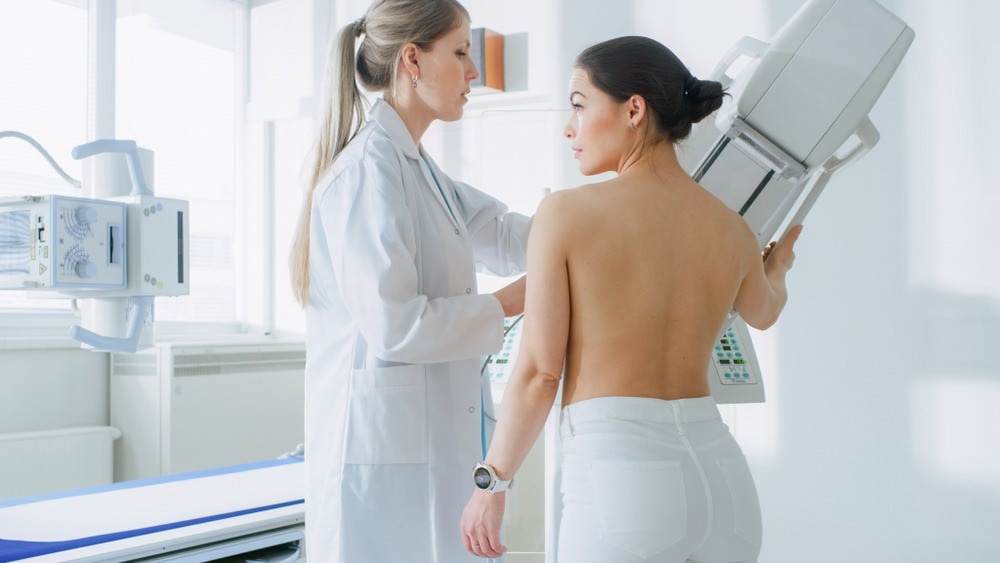In low- and middle-income countries (LMICs), breast cancer poses an urgent crisis, but most countries lack proper medical imaging equipment to assess the breast. A new PLOS Digital Health pilot study evaluated the efficacy of the volume sweep imaging (VSI) ultrasound scans and artificial intelligence (Samsung S-Detect for Breast) in providing fully automated and inexpensive breast ultrasound scans and interpretation without the need for experienced radiologists or sonographers.
 Study: No sonographer, no radiologist: Assessing accuracy of artificial intelligence on breast ultrasound volume sweep imaging scans. Image Credit: Gorodenkoff/Shutterstock
Study: No sonographer, no radiologist: Assessing accuracy of artificial intelligence on breast ultrasound volume sweep imaging scans. Image Credit: Gorodenkoff/Shutterstock
Background
Every year, about 2 million breast cancer cases are reported, and it has been estimated that most of them are in LMICs. This is largely driven by the significant delays in diagnosis, which can sometimes be more than 400 days. Diagnosis is hampered due to the lack of proper diagnostic imaging technology in LMICs.
Volume sweep imaging (VSI) is an imaging technique that uses standardized imaging protocols. These protocols are based on sweeps of the ultrasound probe over a target region. VSI overcomes the problems associated with the lack of trained sonographers, as it can be learned within a few hours by individuals with no previous experience in ultrasound imaging.
The initial progress has been promising, but a radiologist is still key to interpreting the obtained images. This is why automatic interpretation using artificial intelligence could significantly enhance its applicability.
Researchers have developed an artificial intelligence-based tool for diagnostic analysis of breast masses, namely, S-Detect (Samsung Medison, Seoul, Korea). It uses convolutional neural networks and has shown exceptional results in clinical testing, performing at par or better than radiologists.
About the study
The current study evaluated the performance of S-Detect on VSI ultrasound imaging. It was performed by medical students with a portable Butterfly iQ ultrasound probe. It must be noted that these students had no prior ultrasound experience. A prior clinical study of breast VSI images was tested, and the key aim of this study was to lay the foundations for developing a completely automated system incorporating S-Detect and VSI.
To ensure robustness, the S-Detect VSI report was compared to the pathological diagnosis, the VSI report by an expert radiologist, the standard of care ultrasound S-Detect report, and the standard of care ultrasound report by an experienced radiologist. The key hypothesis was that S-Detect results between VSI and standard-of-care ultrasound would be similar.
Key findings and insights
High diagnostic accuracy was noted, providing a credible proof of concept to diagnose palpable breast lumps automatically. The accuracy was comparable to mammography. An added advantage was that no radiologists or sonographers were required. For cancers, cysts, fibroadenomas, and lipomas, a significant degree of concordance was noted between the S-Detect interpretation of VSI and the expert standard of care ultrasound report, the pathological diagnosis, the standard of care ultrasound S-Detect interpretation, and the expert VSI ultrasound report.
S-Detect designated pathologically proven cancers as “possibly malignant,” with a specificity of 86% and sensitivity of 100%. The key utility of this approach would be to make it easy to access ultrasound imaging, which could significantly reduce delays associated with a breast cancer diagnosis. It has been estimated that only 20–50% of breast cancer cases in LMICs, present in stage 1 or 2. This highlights the dire need for early breast cancer diagnosis in these countries.
Conclusion
A key limitation of the study was using a single frame for interpretation. Future work could make it possible to use multiple frames from the VSI cine clips for interpretation. However, the main aim of this study was to provide a proof-of-concept, which minimized the adverse impact of this limitation.
In sum, we are facing an urgent crisis related to the rising breast cancer cases, and the problem is more acute in LMICs. The crisis is compounded by the lack of ultrasound imaging technology in these countries, which significantly delays diagnosis and increases morbidity and mortality.
The combination of artificial intelligence and VSI is a promising, reliable, portable, and cost-effective way to realize increased access to imaging without the need for experienced radiologists and sonographers. An impressive accuracy of S-Detect on VSI scans was demonstrated in this study. More research is required to fine-tune individual components and enable the automatic detection of breast lumps in VSI clips that could be analyzed by artificial intelligence.
The authors have proposed an expedited study of this ground-breaking innovation that could save several lives. They estimate that this system could reduce costs by at least an order of magnitude while, at the same time, significantly increasing ultrasound imaging access to millions of patients in LMICs